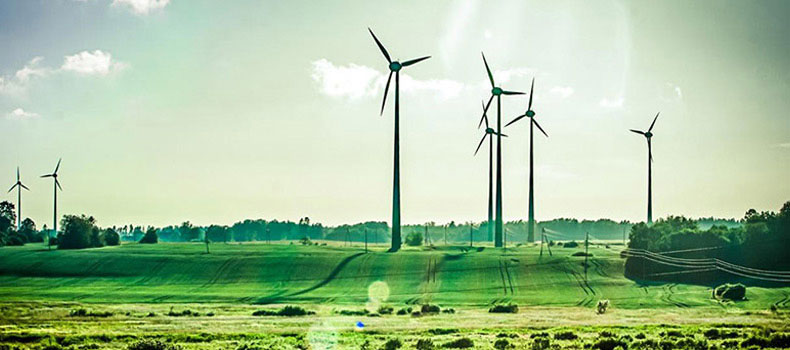FIRE SAFETY IN WIND TURBINES

October 16, 2019
Fire Safety in Wind Turbines
In 2013, wind power supplied 1% of the world’s total energy demands, and at present, offshore wind power constitutes roughly 2% of the world’s power production capacity. More than 91% (8,045 MW) of all offshore wind turbines are in European waters, primarily in the North Sea (5,094 MW: 63%), the Atlantic (1,808 MW: 22%), and the Baltic Sea (1,142 MW: 14%). Optimising the production of this green energy source is of interest to many. Fires in wind turbines have been identified as a possible cause of losses, and are a safety aspect for personnel. A number of challenges were identified and discussed at a seminar in September 2016, and will be considered in a coming research project.
Background to the fire safety of wind turbines
Offshore wind power is a growing energy source. The global offshore production of electricity from wind power increased to 8.8 GW in 2014. The total production of electricity globally in 2013 was 23,322 TWh.
Optimising wind power so as to minimise disruption of production insofar as is possible would thus be enormously positive from an environmental perspective. The occurrence of fires in wind turbines is one such disruption, and the focus of a study that was performed by SP Safety at SP Technical Research Institute of Sweden.
The study shows that 10-30% of all incidents in wind turbines that lead to a halt in production are due to fire. This is true for both on- and offshore wind turbines. According to data from the Caithness Windfarm Information Forum, the number of incidents annually ranged between 120 and 160 for the years 2007-2012. A study by G. Rein, Reader in Thermal Energy at the Department of Mechanical Engineering of Imperial College, London, estimates that this figure only constitutes 10% of the actual fire incidents. Unfortunately, the validity of the data is uncertain as there is currently no formal process for reporting incidents.
The literature provides a range of numbers for wind turbine fires, depending on the source of information. The most reliable source is deemed to be Det Norske Veritas Germanischer Lloyd (DNV GL), an international consulting firm that gathers statistics, which states 0.5 fires per 1000 wind turbines per year. With regard to frequency, problems due to fire may be less significant than other issues, such as mechanical malfunctions in offshore wind turbines. Wind turbine fires have, however, caused substantial losses (equal to or higher than the original cost of the wind turbine), particularly at sea. Offshore wind turbines are more difficult to access in case of fire than onshore ones. The causes of fire incidents appear to be similar for on- and offshore turbines, and are not simply a problem with regard to the continuity of operations, but primarily a matter of safety. In 2013, a crew of four engineers died in Ooltgensplaat, the Netherlands, in a wind turbine fire.
Causes of fire
The causes of fire are currently only recorded by insurance companies when the damage exceeds the insurance policy excess, i.e. when they must pay compensation. Various sources of information give the following causes of fire incidents: The highest frequency is ignition shortly after maintenance and repairs; followed by lightning strikes (although these still lead to fires, their incidence has decreased in recent years with changes to the construction of turbines); electrical failure; ignition due to a hot surface; cooking. 50% incidents involve people in the nacelle, and thus a fire becomes a safety risk.
For a fire to start, an ignition source and combustible material are required. Possible ignition sources include lightning strikes, overheating, surface ignition, and electrical failure. Combustible materials inside a wind turbine include the composite materials of the blades, the interior surfaces and linings of a nacelle, and the main shaft of the turbine itself. Furthermore, there are flammable liquids in various parts of the nacelle, including the gear box, hydraulic system, oil pumps, mechanical brake, and generator.
Protecting You With Fire Safety Design … Have a Chat With Us

We deliver international standard consultation service regarding fire safety & fire engineering.
Our Industries
– Flight Industries
– Commercial Buildings
– Educational Institutions
– Healthcare Buildings
– Hospitality & Entertainment
– Government & Military
Quick Links
– About Us
– Services
– News
– Request A Quote
– Privacy Policy
Get In Touch
27-27-1, Jalan Neutron U16/Q
Denai Alam, 40160 Shah Alam Selangor, Malaysia
+603-7831 4791
Mon – Sat : 9am to 5pm
Copyright © 2019 Fesdes Sdn. Bhd. All Rights Reserved.
Co. Registration No. (1341647-A)